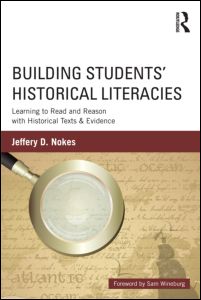PhD Candidate
University of New Brunswick
(Fredericton)
Picture this:
"Ms. Cordova, the principal at McArthur Middle School, walks down the hall of the social studies department during third period. She notices the lights are off in Mr. Hanks’ classroom and, glancing in, observes that he is showing students a video. Most students are filling out a worksheet. Ms. Cordova is distracted by loud voices coming from the next classroom down the hall. As she approaches, she hears students reciting in unison the names of the presidents of the United States in chronological order… Finally Ms. Cordova sees Mr. Rich’s classroom, the class she has come to observe. As she enters, students’ behaviour appears somewhat chaotic… As Ms. Cordova approaches, Mr. Rich nervously welcomes her, inviting her to join the students’ discussions. Students pay little attention to her. They are looking at a black and white photograph of children working in a textile mill..." (Noke, 2013, p.3)
These words are drawn from the opening passage of Jeffrey Nokes’ publication Building Students’ Historical Literacies: Learning to Read and Reason with Historical texts and Evidence (2013). Having completed 13 weeks of fieldwork with a class of seventh-graders (exploring the role of evidence and sources in history education), I see great relevancy in Nokes’ words.
Through "quasi-autobiographical" vignettes that set the stage for each chapter, we enter into the world of the classroom teacher. In this way we are able to empathise with the challenges—as well as rewards—teachers face in integrating Historical Thinking concepts into history education. Indeed, as both Ronald Martinello and David Bussel have confided, the transition from a "Mr. Hanks" to a "Mr Rich" is not an easy task. Reflecting back on my own (relatively brief) classroom experience, such a transition in learning culture can be challenging at best; Nokes, however, demonstrates how it can be done.
